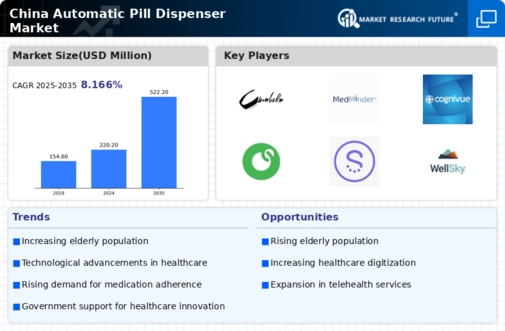The China Automatic Pill Dispenser Market has been experiencing notable growth driven by the increasing aging population, rising prevalence of chronic diseases, and advancements in healthcare technology. This market showcases a plethora of players with varying levels of competition, leading to a dynamic environment where innovation and operational efficiency are critical for success. The demand for automatic pill dispensers is burgeoning as healthcare providers and patients seek improved medication adherence and management solutions.
Competitive insights reveal a landscape where companies focus on product quality, technological advancements, market accessibility, and a comprehensive understanding of consumer needs to carve out a significant market presence. Zhongshan Happiness Technology has positioned itself strongly in the China Automatic Pill Dispenser Market by leveraging its expertise in health technology solutions. The company stands out due to its focus on user-friendly design and innovative features that cater to the specific needs of Chinese consumers.
Zhongshan Happiness Technology has created a range of automatic pill dispensers that support various medication regimens, integrating capabilities such as real-time tracking, alerts, and mobile app connectivity. The company's strengths lie in its robust research and development efforts, allowing it to maintain a competitive edge through continuous product improvement and customization tailored to local market conditions. Furthermore, strategic partnerships with healthcare institutions enhance its product credibility and stimulate market penetration in several regions across China.
Alibaba Health Information Technology operates with a significant presence in the market, focusing on leveraging its technological prowess and online ecosystem to enhance healthcare access and medication management. The company offers an array of key products and services in the automatic pill dispenser sector, emphasizing integration with its extensive digital health platform. Alibaba Health Information Technology is well-known for its capabilities in data analytics and cloud computing, which allow it to deliver advanced medication management solutions tailored to the needs of healthcare providers and patients throughout China.
The company’s strengths include its capacity to marry e-commerce solutions with health management, providing a seamless experience for consumers. Additionally, its strategic mergers and acquisitions have fortified its market standing, allowing for broadening service offerings and improving its technological advancements, which solidify its role as a key player in enhancing medication adherence and overall health outcomes across the region.



















